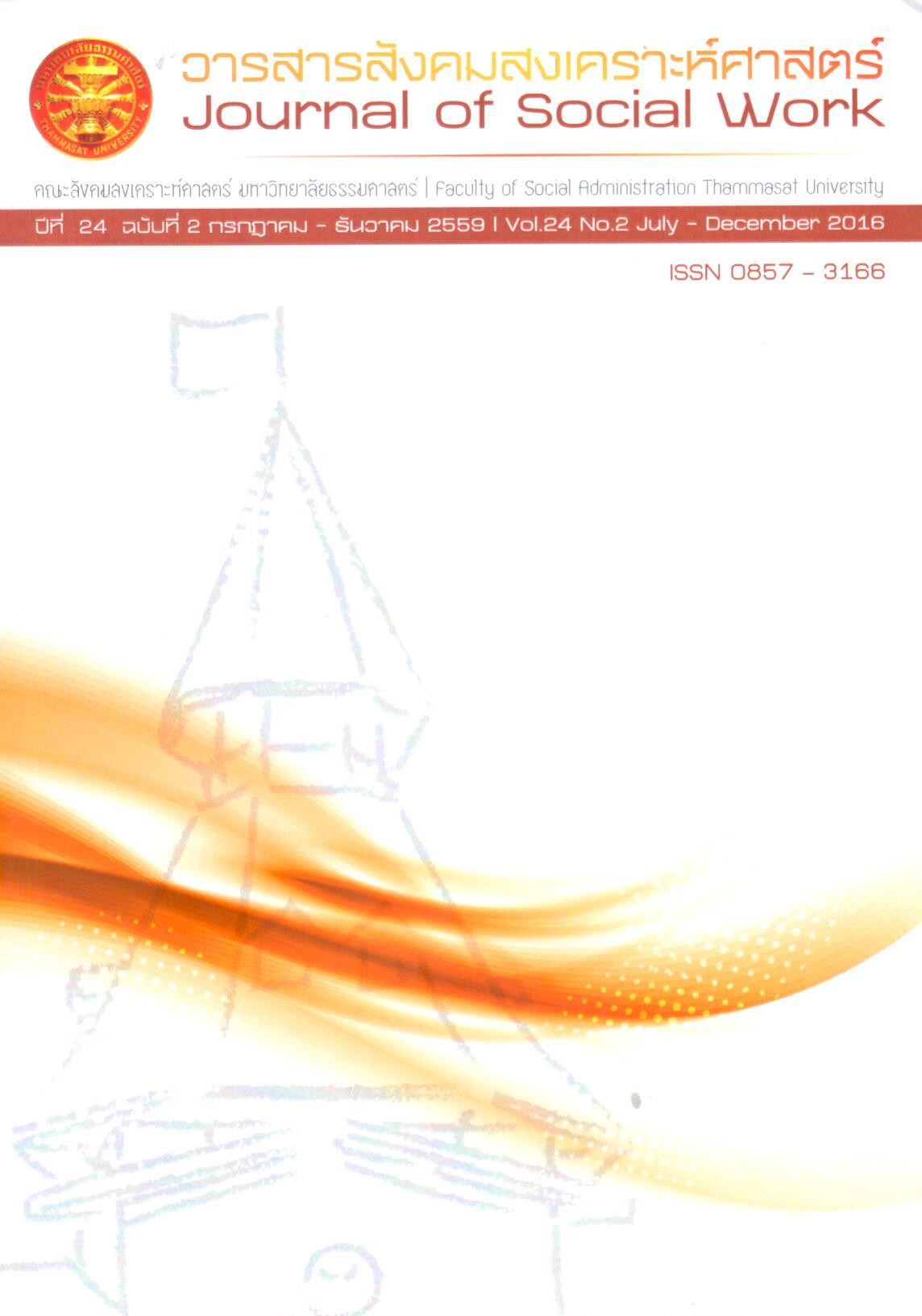A Comparative Study of Children and Youth Capabilities in ASEAN
Keywords:
Capabilities, Children and Youth, ASEANAbstract
“A comparative study of children and youth capabilities in ASEAN” aims to study and comparative the factors of children and youth capabilities in ASEAN, especially high and middle-high level of average revenue per capital; Singapore, Brunei-DarusSalam, Malaysia, and Thailand. The factors are used to comparative as follow: 1) studying and working factors, 2) emotional and responsibility factors, 3) participation in community and society factors, and 4) health care factors. Moreover, the study aims to find ways of countries cooperation to improve capabilities of children and youth including suggests strategies and policies to develop cooperation with other countries for Thailand. This research is a Qualitative Research by using documentary study and in-depth interviews. Results indicate that children and youth capabilities in Singapore are higher level scores in studying-working factors and health care factors in all criteria than other countries. In contrast, the emotional and responsibility factors, although Thailand’s children and youth is higher level scores in school happiness and friend participation criteria, Malaysia’s children and youth is higher level scores in emotional intelligent criteria. The last factor, participation in community and society, Thailand’s children and youth is higher level scores in all criteria than other countries. To sum up, the factors which influence to support and develop capabilities of children and youth are in-house factors for example, public administrations and development assets and external factors such as cooperation in education, technology, welfare and human security. These factors are significant to create high human resources for ASEAN and to reduce deferent country development in our region.
References
กระทรวงการพัฒนาสังคมและความมั่นคงของมนุษย์. (2544). นโยบายเยาวชนแห่งชาติและแผนพัฒนาเด็กและเยาวชนระยะยาว พ.ศ.2545 – 2554. กรุงเทพฯ
ลำดวน นำศิริกุล. (มปป.) แบบทดสอบเชาวน์ปัญญา. (ออนไลน์). เข้าได้จาก http:// www.mettadham.ca/iq%20examine.htm
วัชราพร รัตนยานนท์. (2558). ก้าวสู่ประชาคม ASEAN 2015. สถาบันพัฒนาข้าราชการพลเรือน, สำนักงาน ก.พ.. นนทบุรี
สถาบันพัฒนาข้าราชการพลเรือน สำนักงาน ก.พ.. (2557). โครงการสื่อการเรียนรู้ “อาเซียน กูรู” (learning Package). นนทบุรี
สำนักงานเลขาธิการสภาการศึกษา กระทรวงศึกษาธิการ. (2557). สภาวการณ์การศึกษาไทยในเวทีโลก ปี 2557. กรุงเทพฯ
Dzuhailmi, D., Nobaya, A., Md. Salleh, H., Mariah, M., Jamilah, O. & Nor Azliza Wanis, A. 2011. 1Malaysia Challenge and the Reality of Youth Involvement with Unity Campaign. In: Haslinda, A., Sarjit, S.G., Ismi Arif, I., Turiman, S., Nobaya, A. & Dzuhailmi, D., Eds. Youth: Heir of 1Malaysia. UPM Press.
Goleman, D. (1998a). Working with emotional intelligence. New York: Bantam Books.
Lynn R. Vanhanen T. (2012). Intelligence : A Unify Construct for Social Science. London: Printed in Great Britain
OECD. (2014). PISA 2012 Results in Focus: What 15-year-olds know and 2 what they can do with what they know. Paris
OECD. (2010). PISA 2009 Results: Executive Summary. Paris
Spaces for Children’s Participation in ASEAN. (2011). Published by FORUM-ASIA
Transparency International. (2015). Corruption Perception Index 2014: Result. Germany
UESCCO Institute for Statistic. (2013). Educational Financial Resource. Canada
UNICEF. (2014). The Convention on The Rights of The Child Guiding Principles : General Requirements for All Rights. (online). from http://www.uni cef.org/crc/files/Guiding_Principles.pdf
United Nations. (2004). World Population Prospect, the 2004 Revision. Department of Economic and Social Affairs. New York: UN
United Nation. (2015). World Population Prospects: The 2015 Revision. Department of Economic and Social Affairs. New York: UN
Wechsler, D. (1955a). The Range of human capacities. 2nd ed.. Baltimore: Williams & Wilkins
World Bank. (2011). East Asia and Pacific Economic Update 2011. 2 vols. Washington, DC: World Bank
World Economic Forum (WEF). (2013). The global competitiveness report 2013 – 2014: Full data edition. Switzerland
World Health Organization (WHO). (2014). World Health Statistic 2014. Geneva: WHO
Youthpolicy.org. (2014). Factsheet: Brunei
Youthpolicy.org. (2014). Factsheet: Malaysia
Youthpolicy.org. (2014). Factsheet: Singapore
Youthpolicy.org. (2014). Factsheet: Thailand
Downloads
Published
How to Cite
Issue
Section
License
The manuscripts published in the Social Work Journal is the copyright of the Social Work Journal, Thammasat University
Any article or opinion appeared in the Social Work Journal will solely be under the responsibility of the author The Faculty of Social Administration, Thammasat University and the editors do not need to reach in agreement or hold any responsibility.



